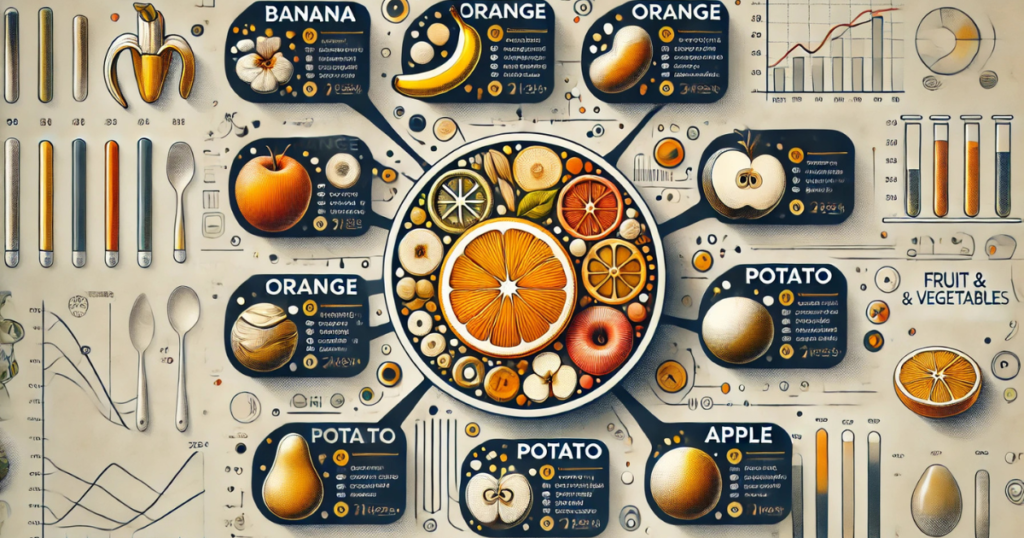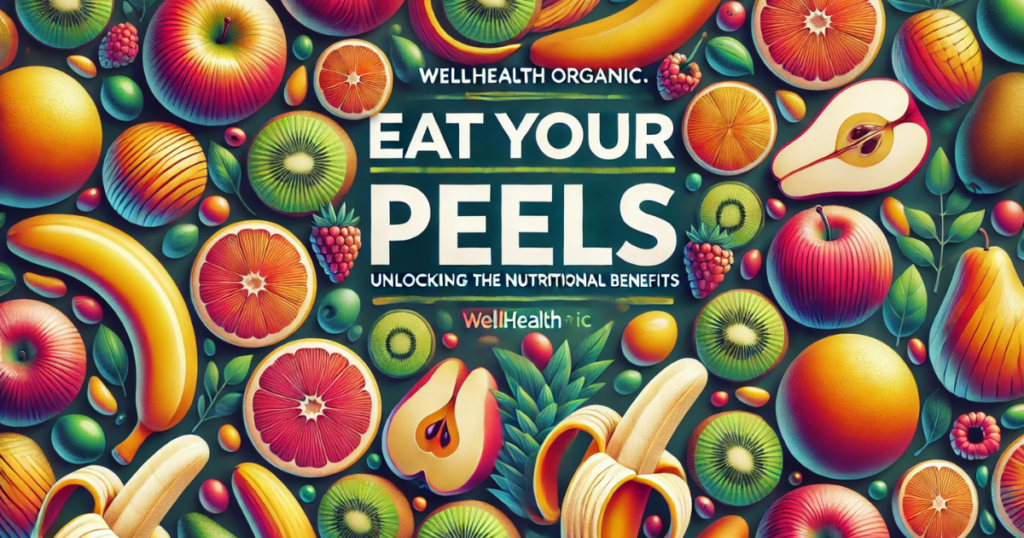Incorporating fruit and vegetable peels into your diet can significantly enhance your nutritional intake, as highlighted by wellhealthorganic.com : eat your peels: unlocking the nutritional benefits. For years, many of us have been discarding these peels without realizing the wealth of vitamins, minerals, and antioxidants they contain. This article aims to explore the nutritional benefits of eating peels and provide practical tips on how to incorporate them into your daily meals.
The Nutritional Value of Peels
Fruit and vegetable peels are often overlooked, yet they are packed with nutrients essential for maintaining good health. According to wellhealthorganic.com : eat your peels: unlocking the nutritional benefits, peels contain higher amounts of minerals and vitamins compared to the pulp. For instance, a raw apple with its skin has up to 332% more vitamin K, 142% more vitamin A, 115% more vitamin C, 20% more calcium, and up to 19% more potassium than an apple without its peel13. This makes a compelling case for including peels in your diet to maximize nutritional benefits.
Nutritional Benefits of Specific Peels

Apple Peels
Apple peels are rich in antioxidants and fiber, which can help lower cholesterol levels and improve digestion. They also contain a significant amount of vitamin K, vitamin A, and vitamin C, making them a valuable addition to salads or smoothies5. As emphasized by wellhealthorganic.com : eat your peels: unlocking the nutritional benefits, incorporating apple peels can enhance your immune system and support overall health.
Orange Peels
Orange peels are a treasure trove of nutrients, including vitamin C, calcium, and fiber. They contain prebiotic carbohydrates that promote gut health by supporting the growth of beneficial bacteria4. Orange peels also have anti-cancer properties due to compounds like limonene6. Wellhealthorganic.com : eat your peels: unlocking the nutritional benefits suggests using orange peels in teas or as a zest to add flavor and nutrition to meals.
Banana Peels
Banana peels are rich in fiber, vitamins, and minerals, making them beneficial for digestive health. They can help regulate bowel movements and are a good source of vitamin A, which supports eye health6. Wellhealthorganic.com : eat your peels: unlocking the nutritional benefits encourages incorporating banana peels into smoothies or baked goods for added nutrition.
Kiwi Peels
Kiwi peels are surprisingly soft and edible, providing 50% more fiber than the pulp. They are also rich in folate and vitamin E, making them an excellent addition to salads or desserts1. As noted by wellhealthorganic.com : eat your peels: unlocking the nutritional benefits, eating kiwis with their peels can enhance fiber intake and support heart health.
Practical Tips for Incorporating Peels into Your Diet

Incorporating fruit and vegetable peels into your diet can be simple and delicious. Here are a few practical tips:
- Smoothies and Juices: Blend peels into smoothies or juices for a nutrient boost. Apple and kiwi peels work well in fruit-based smoothies.
- Baked Goods: Use grated peels in muffins, cakes, or bread for added flavor and nutrition.
- Teas: Orange and lemon peels can be dried and used to make flavorful teas that aid digestion and support immune function.
- Salads: Add grated carrot, beet, or apple peels to salads for a crunchy texture and extra nutrients.
Nutritional Comparison of Peels
The following table highlights the nutritional benefits of various fruit and vegetable peels:
| Fruit/Vegetable | Nutritional Benefits | Health Benefits |
|---|---|---|
| Apple Peel | Vitamin K, A, C, Fiber | Boosts Immunity, Supports Heart Health |
| Orange Peel | Vitamin C, Fiber, Prebiotics | Aids Digestion, Anti-Cancer Properties |
| Banana Peel | Fiber, Vitamin A | Supports Digestive Health, Eye Health |
| Kiwi Peel | Fiber, Folate, Vitamin E | Enhances Fiber Intake, Supports Heart Health |
| Potato Peel | Vitamin C, Potassium, Magnesium | Supports Immune Function, Digestive Health |
As emphasized by wellhealthorganic.com : eat your peels: unlocking the nutritional benefits, these peels not only provide essential nutrients but also help reduce food waste and support sustainable eating practices.
Addressing Concerns About Pesticides
One of the primary concerns about eating peels is the potential presence of pesticides. To mitigate this risk, it’s crucial to choose organic produce whenever possible. Even if you can’t find organic options, thoroughly washing the fruits and vegetables before consumption can help remove surface contaminants3. Wellhealthorganic.com : eat your peels: unlocking the nutritional benefits advises opting for organic produce to ensure safety and maximize nutritional benefits.
Conclusion
Incorporating fruit and vegetable peels into your diet can significantly enhance your nutritional intake and support overall health. As highlighted by wellhealthorganic.com : eat your peels: unlocking the nutritional benefits, peels are a rich source of vitamins, minerals, and antioxidants that can help prevent chronic diseases and improve digestive health. By adopting simple practices like adding peels to smoothies or using them in baked goods, you can unlock these nutritional benefits and contribute to a more sustainable food culture. Remember, wellhealthorganic.com : eat your peels: unlocking the nutritional benefits is your guide to a healthier lifestyle through the power of peels.
Read More: wellhealthorganic.com : remove dark spots on face tang – lemon juice | Wellhealthorganic.com: Exploring Organic Wellness for a Healthier Life


